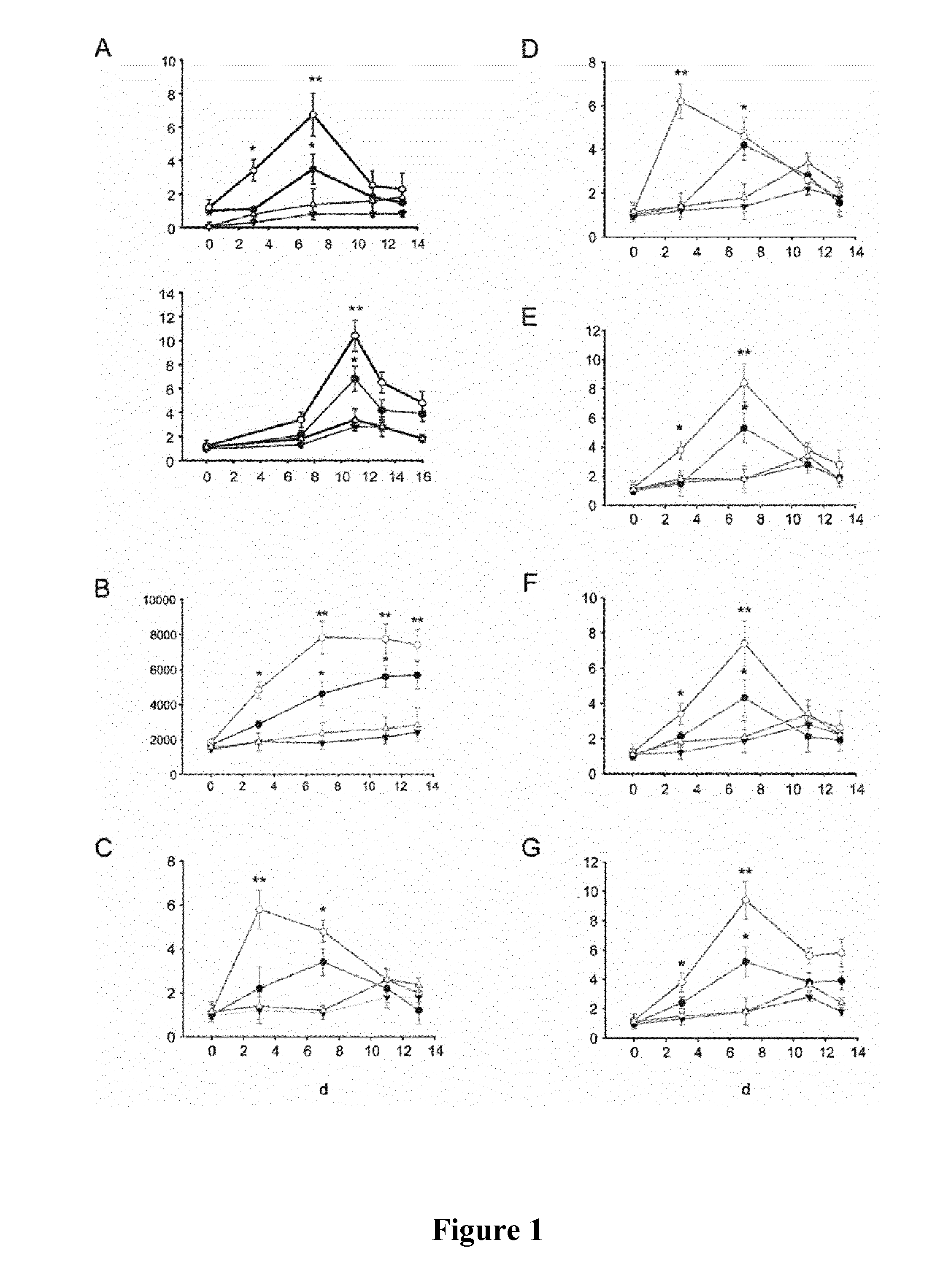Co-releasing compounds & formulations thereof useful for inducing mitochondrial biogenesis and tissue repair
- Summary
- Abstract
- Description
- Claims
- Application Information
AI Technical Summary
Benefits of technology
Problems solved by technology
Method used
Image
Examples
example 1
Differentiation of Embryonic Cells Lines Toward Functional Cardiomyocytes
[0111]Re-based CORMs of the invention are tested for their ability of inducing myocardioblast stem cell differentiation and maturation into cardiomyocytes as described below.
[0112]Chemicals and reagents. All chemicals and reagents were purchased from Sigma (St. Louis, Mo., USA), unless otherwise specified. The mitochondrial probes Mitotracker green, JC-1 reagent, MitoSox™ red, MTT, Alexa-488, and Alexa-595 secondary antibodies were purchased from Molecular Probes (Invitrogen, Carlsbad, Calif.). B12-CORM2 was synthesized as described in WO 2011 / 110315 and Zobi et al., 2012,supra.
[0113]Culture and differentiation of H9c2 cells. Rat cardiomyoblast-derived H9c2 cells (ATCC CRL1446) were grown in Dulbecco's modified Eagle's media (DMEM) containing 10% fetal bovine serum and 1% (v / v) antibiotic mixture at 37° C. in a humidified atmosphere at 5% CO2. Cells were induced to differentiate toward the cardiac-like phenotyp...
example 2
Differentiation of Primary Cardiac Precursor Cell Cultures
[0136]Re-based CORMs of the invention are tested for their ability to induce differentiation of primary cardiac precursor cells in culture as described below.
[0137]Mice. All animals were maintained in accordance with the recommendations of the US National Institutes of Health Guide for the Care and Use of Laboratory Animals (National Institutes of Health publication 86-23, 1985) and the experiments were approved by the Swiss animal welfare authorities. Neonatal C57BL / 6 pups (1-2 days) were purchased from Janvier (Le Genest-Saint-Isle, France) and were housed in the animal facility until sacrifice.
[0138]Cell isolation and culture. Ventricles isolated from neonatal hearts (1-2 days old) are digested in buffer containing 0.5 mg / ml collagenase (Worthington Biochemical) and 0.45 mg / ml pancreatin (Sigma). Cardiomyocytes and cardiac non-myocyte cells (NMCs) are then separated by two differential platings (45 min). Adult ventricles i...
example 3
Differentiation of Adult Human Cardiac Progenitor Cell Lines
[0146]B12-CORM2′s impact on the differentiation of human precursor cells into cardiomyocytes was assessed on well-characterized endothelial cardiac progenitor cells, isolated from human peripheral blood, as previously described (Rignault-Clerc, et al., 2002, Burns). Analyses carried out are described in Example 2.
PUM
 Login to View More
Login to View More Abstract
Description
Claims
Application Information
 Login to View More
Login to View More - R&D
- Intellectual Property
- Life Sciences
- Materials
- Tech Scout
- Unparalleled Data Quality
- Higher Quality Content
- 60% Fewer Hallucinations
Browse by: Latest US Patents, China's latest patents, Technical Efficacy Thesaurus, Application Domain, Technology Topic, Popular Technical Reports.
© 2025 PatSnap. All rights reserved.Legal|Privacy policy|Modern Slavery Act Transparency Statement|Sitemap|About US| Contact US: help@patsnap.com



